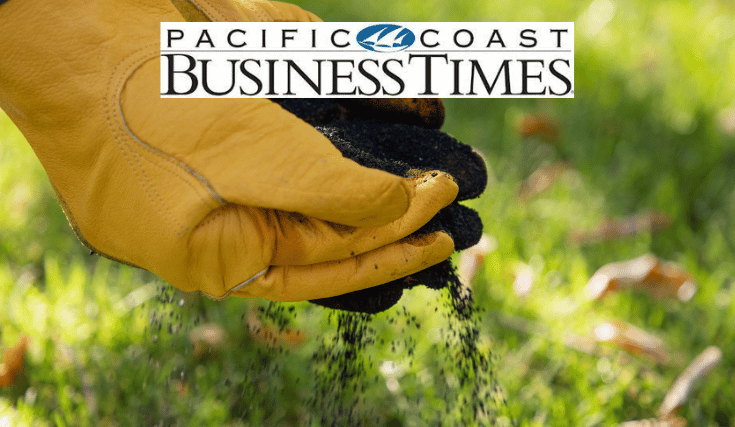Pacific Coast Business Times, Guest Commentary, Sep. 9, 2022 — Ventura County’s Turf Replacement Rebate Program is one of many in California making the news. Aimed at protecting California’s diminishing water supply, the program pays homeowners as much as $3,200 to remove their lawns. As well-intentioned as this program is, there are better strategies for reducing water usage that should be explored before outright removing lawns at the expense of taxpayers.
As we look at long-term strategies, we need to start by reviewing the environmental impact of lawns. Removing so much greenery from our cities could have numerous environmental consequences. For one, lawns help counter the heat island effect, which occurs in major cities where large amounts of cement and infrastructure trap heat and cause these areas to experience exponentially higher temperatures than the surrounding rural areas.
But higher temperatures are not the worst of it. The heat island effect can lead to increased energy consumption and higher greenhouse gas emissions, which leads to poor human health and lower-quality water, among other negative consequences.
One study conducted in Los Angeles found that removing lawns and grassy parks in place of native bushes and other drought-resident landscapes would increase daytime temperatures by as much as 1.3 degrees Fahrenheit. Plants (including grass) are regarded as carbon sinks for our planet. That means grass and other living organisms act like sponges and absorb CO2 from the atmosphere, leading to cleaner air and turning back the clock on climate change.
News headlines for incentive programs highlight the thousands of dollars homeowners are receiving for removing their lawns, not to mention, the grass removal funds of up to $500,000 reserved by municipalities for these incentives. This is taxpayer money being spent on short-term fixes that could end up causing more problems in the future. Instead, these funds should be used for long-term solutions aimed at increasing California’s water supply naturally through improved soil health.
It is simply unwise to remove soil that can help sequester carbon and, therefore, reverse climate change. Instead of removing soil from these lawns as a solution, we need to look at how homeowners can reduce water usage while maintaining healthy lawns and creating healthy soil with diverse microorganisms.
An effective and cost-efficient way to do this is through biochar and wood vinegar — centuries-old plant enhancers created from biowaste. A combination of these natural soil amendments can reduce water usage, add rich organic matter, and rebuild chemical fertilizer-damaged soil. All the while, these products are helping to remove and sequester carbon from the atmosphere.
As the CEO of VGrid Energy Systems, a truly clean and renewable energy company, I’ve seen the benefits of this firsthand. Our team creates biochar and wood vinegar from pistachio shells – and the end results are premium biochar that can hold water six times longer than traditional soil and wood vinegar that can add precious nitrogen, phosphorus, and potassium to the soil.
Instead of removing homeowners’ lawns, we should be looking at ways to make lawns more manageable and healthier while investing in methods to increase the carbon-sequestering abilities of soil.
At the end of the day, we need to acknowledge that people love their lawns and landscaping, and there are ways to maintain them while reducing water usage. There are strategies that should be explored and implemented before we begin paying homeowners to remove their lawns.
The lawns are not the problem — in fact, they are a very manageable and repairable piece of the climate change-driven drought. Instead of incentivizing short-term solutions, we need to create cities, states and countries that create robust and thoughtful water-saving strategies.
There are environmental strategies that allow us to have our lawn and enjoy it too. I hope municipalities and homeowners consider these long-term solutions that can help maintain lawns while keeping with each city’s water restrictions. By doing so, they will be removing carbon from the atmosphere and, in turn, helping the ongoing fight against climate change.
Greg Campbell is the CEO of VGrid Energy Systems in Camarillo, a company that generates electricity and biochar from biomass waste.

